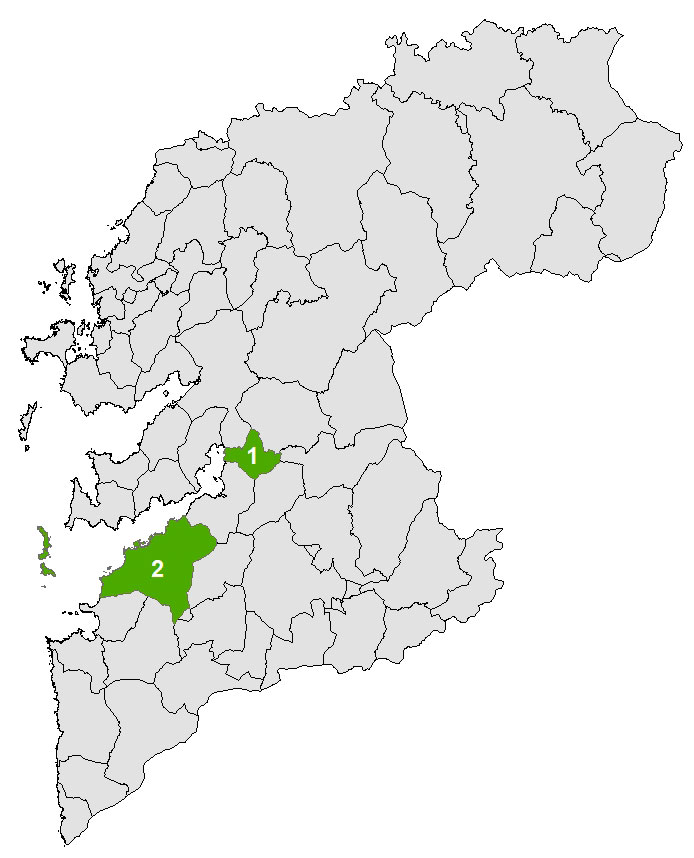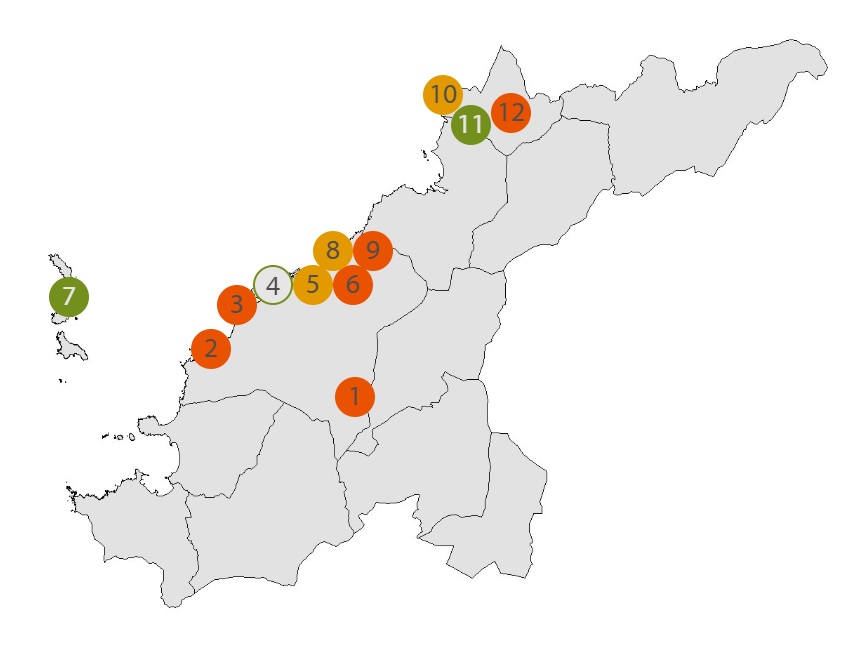06.EXPERIENCE VIGO
A SEA OF STORIES
A SEA OF STORIES
Experience the Ría de Vigo through its museums, heritage and landscape. Enjoy its great variety of sea products and be surprised by the local seafood and canning tradition of Vigo. Discover how important was to protect the estuary in the Middle Ages, when fortifications were built to avoid enemy attacks.
Experience the Ría de Vigo, which smells of sea and salt, and taste the best products of the sea in the towns of Soutomaior and Vigo. The exploitation of sea resources has been a thousand-year-old tradition in Vigo, based not only on seafood harvesting and farming and on fishing, but also on salting and canning activities. Through its landscapes, its heritage and its museums, in this land you will discover the big secrets of the sea.
The Ría de Vigo boasts an important cultural and gastronomy heritage: the Museo do Mar de Galicia (Galician Museum of the Sea) shows us the different sea ecosystems and bring us closer to the sea culture, the castros (pre-Roman hillfort settlements) dating from the Iron Age are evidence of an important shellfish gathering activity. The salt mines of the Roman period show the ancient tradition of the salting industries, an important culinary product for the Romans. During the 19th century, the canning industry became an important economic activity, as can be seen in the many old factories that are still preserved or in the interesting ANFACO Canning Industry Museum.
However, the history of the Ría de Vigo has much more to offer. It was an important defensive point to avoid invasions by sea into the main land, especially during the Middle Ages. And, the Soutomaior Castle was a strategic point to defend the area.

- 1 - Soutomaior
- 2 - Vigo


MUSEUMS
-
This is a project of the National Association of Canned Fish and Seafood Manufacturers aimed at disseminating the importance and evolution of one of the most historic business sectors in Galicia: the canning sector, a pioneering industry in which the sardine is the main product.
Carretera Colexio Universitario, 16, 36310 VigoPhone: +34 986 469 301 -
This is the most important Roman coastal town in the north-west of the peninsula. It is located on a small cape facing the island of Toralla. The main activities of this town were the exploitation of sea resources. A working area, a residence and a bathhouse have been discovered. This museum shows how life was in the town and displays the archaeological artefacts found.
Barrio Illa de Toralla, Oia, 36208 VigoPhone: +34 986 810 260 -
Located in an old canning factory, it has an aquarium that shows the main local ecosystems and how sea and fishing resources are exploited in the area. Inside, one can also admire the remains of the pre-Roman hillfort settlement of A Punta do Muíño do Vento.
Avenida Atlántida, 160, 36208 VigoPhone: +34 986 247 750 -
Located in the old town of Vigo, it shows the cultural and natural resources of the Atlantic Islands, such as its ecosystems, biodiversity or traditional fishing.
R/ Palma (edificio Cambón), 4, 36202 VigoPhone: +34 886 218 090 -
This archaeological centre aims to tell the story of the only solar evaporation pond of the entire Roman Empire that has been preserved in Galicia and turned into a museum. It used to be an important salt factory, which provided salt to the most important fish canning factories. Today, it displays objects related to the industry, and explains how salt was obtained in the factory.
R/ Rosalía de Castro, 21-23, 36201 VigoPhone: +34 986 247 691 -
Built in the 12th century, it was enlarged in the 15th century and turned into a residential manor house in the 19th century. It is one of the best-preserved fortifications in Galicia. Today, it is a museum where one can learn about the exciting lives of some of the figures that used to live in the castle: Pedro Madruga, the Marqués de la Vega de Armijo or María Vinyals. The building is surrounded by a garden that was recognised as International Camellia Garden of Excellence in 2012.
R/ Rial, s/n, 36691 SoutomaiorPhone: +34 886 209 500 +34 986 804 100
OTHER POINTS OF INTEREST
-
A traditional fishing neighbourhood where there used to be dry docks and warehouses to keep the boats and fishing tools. Later, the fishermen’s houses were built. The activities linked to the sea used to take place at the main squares and arcades.
CULINARY MOMENTS
-
Group visits to the Vigo’s fish market are organised by appointment. There, one can attend one of the exciting fresh fish auctions.
-
In the Rúa das Ostras, (Oyster Street) oysters can be tasted raw in several restaurants.
-
Festival of Tourist Interest in Galicia that is celebrated on the first weekend of April, in which oysters can be tasted raw, in empanada (Galician savoury pie stuffed with seasonal fillings) or marinated.
NATURAL SPOTS
-
The archipelago of Cíes, at the entrance of the coastal inlet Ría de Vigo, is made up of three islands with an important ecological value: Monteagudo, O Faro and San Martiño. They serve as observatories of the wildlife of the area.
-
A Peneda Hill, close to the Verdugo River, offers panoramic views over the Ría de Vigo, the coast and even the Cíes Islands. The megalithic necropolis of Cortello dos Mouros and the tumulus Mámoa do Rei were found in the area. In the Iron Age, there was a castro, and, in 1477, the Bishop of Santiago, Alonso Fonseca, built a castle there. Later, a chapel consecrated to the Virgin of A Peneda was erected on the hilltop.
NATURAL SPOTS
- The Atlantic Islands National Park (Vigo, Bueu and Vilagarcía de Arousa)
The park covers more than 8,840 hectares, over 7,285 of them on the sea. It consists of four archipelagos: Sálvora, Cortegada, Ons and Cíes, which serve as natural barriers to protect the coast and the rías (coastal inlets) from the Atlantic Ocean, and gather a rich sea and land biodiversity.
[+] INFO - Boat tours of the Ría de Vigo (Vigo)
Departing from the port of Vigo, there are different options: boat tours of the ría, of the Cíes Islands or of the seaside towns on the other side of the ría: Moaña and Cangas, in O Morrazo.
[+] INFO [+] INFO












